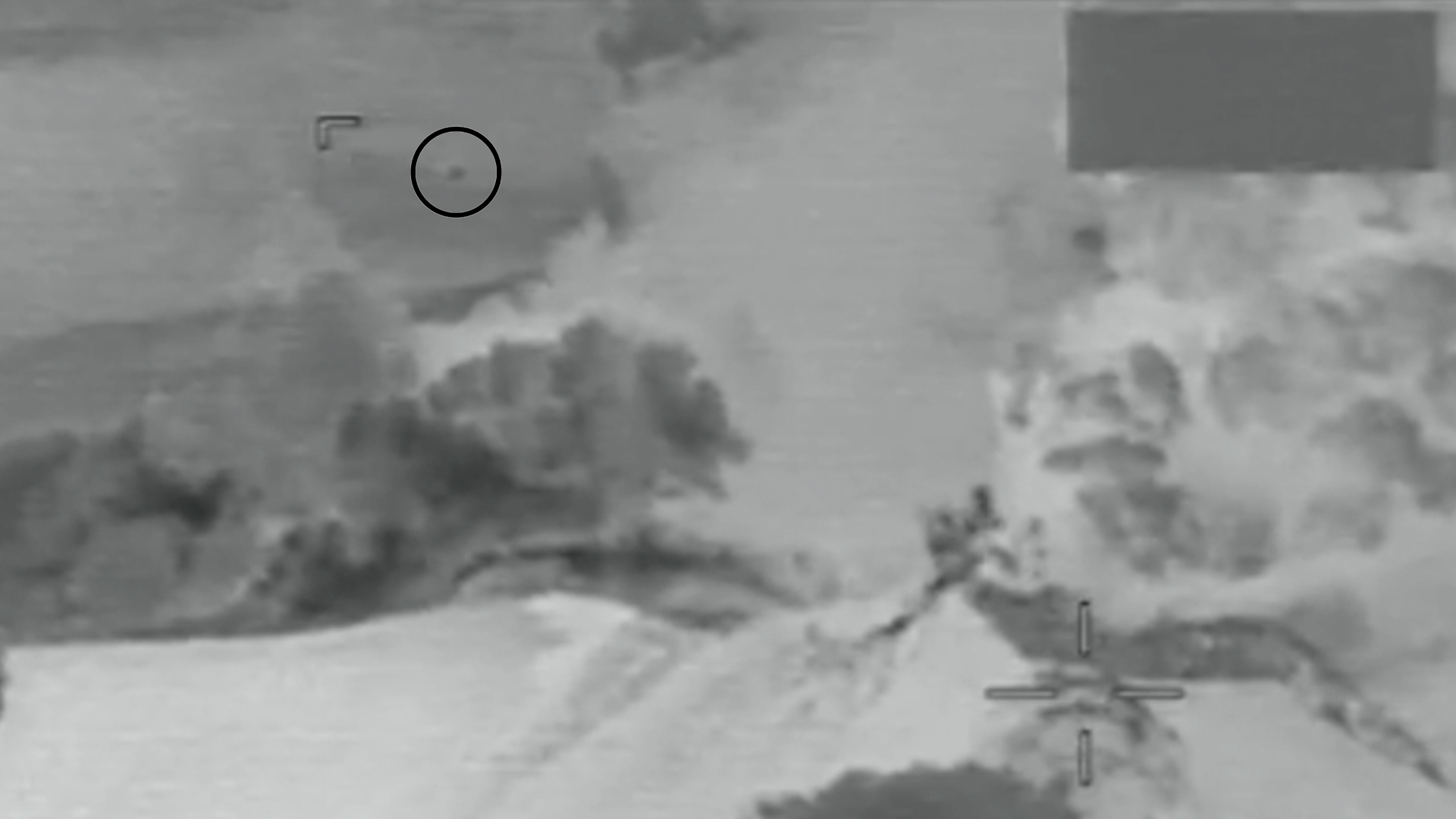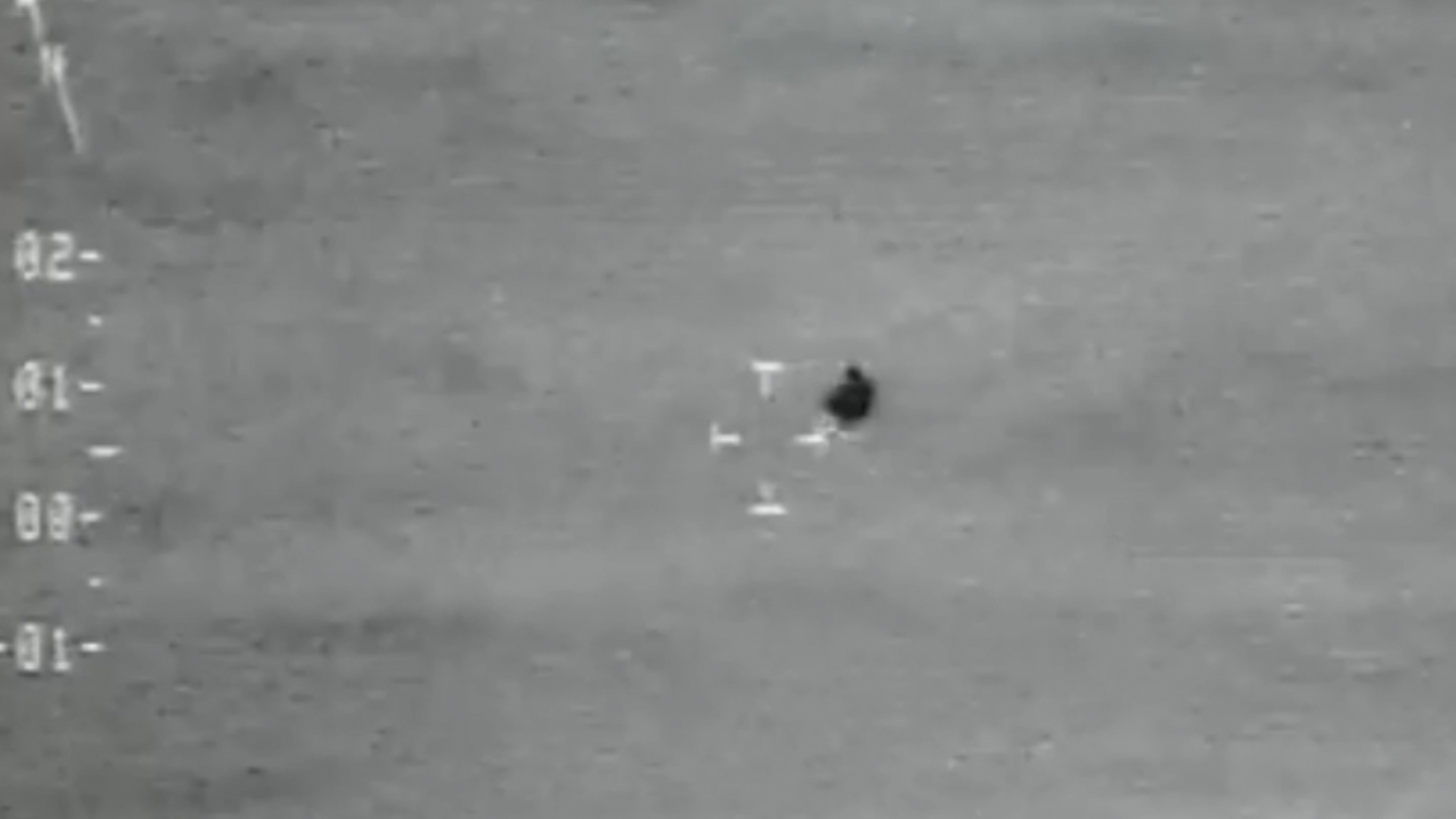
It's never aliens.
At least, it hasn't been yet. The United States Senate Armed Services Subcommittee on Emerging Threats and Capabilities heard testimony on Tuesday (Nov. 19) from Jon T. Kosloski, director of the Pentagon's All-Domain Anomaly Resolution Office (AARO). The U.S. Department of Defense created the office in July 2022 in order to have a single place for military and government personnel to report UFO sightings, or UAP, as they're now known. The new term, short for unidentified anomalous phenomena, encompasses not only unidentified objects or events in the sky, but also those in water, in space or those that appear to travel between these domains.
During today's hearing, Kosloski came in strong, stating that "it is important to underscore that, to date, AARO has not discovered any verifiable evidence of extraterrestrial beings, activity or technology." Still, despite having resolved hundreds of cases with prosaic explanations, Kosloski noted that his office does not believe that every UAP is a bird, balloon or drone. "We do have some very anomalous objects," he said.

Kosloski also reported on the office's latest analysis of UFO/UAP cases, stressing that his office will "continue to follow the science and data wherever they lead" and keep both Congress and the public as informed as possible — at the unclassified level, he clarified.
That stands in stark contrast to testimony presented to a U.S. House of Representatives subcommittee last week, in which a retired U.S. Navy rear admiral and a former U.S. counterintelligence officer told lawmakers that the American government is part of a decades-long coverup to conceal the fact that "we are not alone in the cosmos."
During his testimony, Kosloski gave an overview of his office's activities since it issued a report to Congress and testified in a similar setting last year. "Many reports resolve to commonplace objects like birds, balloons and unmanned systems, while others lack sufficient data for comprehensive analysis," Kosloski said, adding that "only a small percentage of reports received by AARO are potentially anomalous."
Kosloski referred to a UAP incident that occurred in 2013 near Aguadilla, Puerto Rico. The infrared video, shot in 2013 by a U.S. Customs and Border Patrol helicopter, appears to show an object flying just above the ocean before disappearing into it, or perhaps splitting in two.
"We assessed that it was actually flying over the airport the entire time," Kosloski said. When the object appears to disappear in the infrared video that accompanies the case, it is actually the camera sensing that the object is the same temperature as the water behind it. Instead of splitting in two, it was simply two objects — balloons or sky lanterns — in close proximity that came in and out of view.
Kosloski also offered how his office was able to close the case on the infamous GOFAST video, shot by a U.S. Navy fighter jet in 2016 off the coast of Florida. In that case, the object's apparent speed in the video was actually due to the parallax effect, or the camera's perspective, Kosloski explained.
Furthermore, the AARO director showed a 2018 video captured by a drone flying over Mt. Etna that he stated is not widely known among the public. "This was a rather difficult case to solve," Kosloski said. "The object was actually 170 meters away from the plume — not flying through it."
During questioning, Senator Kirsten Gillibrand (D-New York) asked Kosloski about whether or not some individuals who have encountered UAP might be reluctant to engage with his office, referring to accusations some UAP disclosure advocates frequently level against AARO. These critics attest that the office is part of an alleged decades-long U.S. government-led campaign of "excessive secrecy" that aims to keep the public in the dark about UFOs.
In response to Gillibrand's questioning, Kosloski defended his office. "Congress has gone out of its way to create the organization AARO specifically to conduct these sorts of investigations, and has uniquely empowered them to have access to all UAP related information, whether that's historic or current, and we take that responsibility and those authorities very seriously," he said.
Gillibrand also asked about a report released by AARO in March 2024, noting that she has been told "it doesn't show any any evidence of secret programs that have aliens."
But Gillibrand pushed back on that assertion. "That's not how I read the report," the senator said. "What I read in the report is the US government took sightings extremely seriously over the last 75 years, and put some of the greatest minds together to analyze these cases, because they assessed them as some deeply unknown phenomena that may or may not cause threats — that may or may not be related to adversaries."

AARO released a report to accompany today's hearing earlier this week. The report, titled, "All-domain Anomaly Resolution Office’s Annual Report on Unidentified Anomalous Phenomena," examines UAP cases dated between May 1, 2023 and June 1, 2024 as well as historical incidents that were not included in previous reports.
But, like in its other reports, AARO found no smoking gun for alien visitation this year. "AARO has discovered no evidence of extraterrestrial beings, activity, or technology," the report notes. Out of the 485 cases that are well within the report's timeframe, 118 were solved and another 174 were slated to be closed, pending a final review.
Still, AARO's 2024 report says that many cases remain unsolved, and that the office continues to study them. However, AARO’s ability to resolve cases "remains constrained by a lack of timely and actionable sensor data," according to the report, meaning there just isn't enough data to conclusively solve cases that lack detailed or multi-sensor observations. In some cases, all there might be to analyze is a single photograph, a few seconds of grainy video or an aviator's written report. Many UAP sightings happen in the blink of an eye as an unknown object zooms past a moving aircraft, for example, so there often isn't enough time to gather photographic or video evidence.
In other cases, the capabilities of the sensors or platforms involved in the UAP sightings are themselves classified (sometimes, even their existence isn't publicly known), so AARO is unable to discuss them in unclassified reports.
Though overall, according to the 2024 report, there is enough data for AARO to state that it has has "no indication or confirmation that these activities are attributable to foreign adversaries."
Today's hearing echoed a previous hearing held last year on April 19, 2023. During that hearing, AARO's previous director Sean Kirkpatrick told the Senate Armed Services Committee that his office has seen "no credible evidence thus far of extraterrestrial activity, off-world technology or objects that defy the known laws of physics."
Similarly, the report released by AARO in March 2024 that examined historical UFO cases found "no evidence that any USG [U.S. government] investigation, academic-sponsored research, or official review panel has confirmed that any sighting of a UAP represented extraterrestrial technology."
AARO's previous report, released in 2022, examined 510 contemporary UAP reports gathered from government agencies and branches of the United States military. The report found that, while most cases were able to be resolved, 171 remained a mystery.
"Some of these uncharacterized UAP appear to have demonstrated unusual flight characteristics or performance capabilities, and require further analysis," AARO's 2022 report states.
Today's hearing concluded with a discussion of recent incidents in which unidentified drones, or uncrewed aerial systems (UAS), were seen over U.S. military bases and other sensitive installations. Those incidents, Kosloski notes, underscore the need for the United States to have "more persistent monitoring and understand that, whether it is a UAP or a counter-UAS issue, that we need to have that complete domain awareness around our national security facilities."







